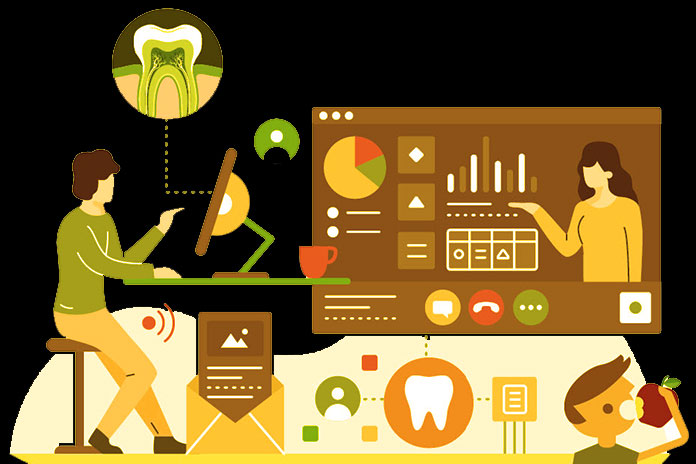In the rapidly evolving landscape of modern healthcare, efficient revenue cycle management (RCM) is crucial for the financial sustainability of dental practices. Dental practices increasingly turn to dental software solutions to overcome these challenges and optimize their revenue cycle. Let’s explore the role of dental software in streamlining revenue cycle management, highlighting its benefits and the impact it can have on dental practices.
1. Automation and Efficiency
Dental software streamlines RCM processes by automating many of the manual tasks that often lead to errors and inefficiencies. It allows dental professionals to manage patient data, appointments, billing, and insurance claims electronically, reducing the need for time-consuming paperwork. Automation also minimizes the chances of errors in coding, billing, or data entry, which can result in claim denials or delayed payments.
2. Improved Accuracy in Billing
Accurate billing is a critical component of RCM for dental practices. Dental software helps ensure the precision of billing by providing standardized coding and documentation procedures. As a result, dental practices can reduce billing errors, minimize claim rejections, and accelerate the reimbursement process, ultimately improving cash flow.
3. Enhanced Insurance Claims Processing
Dental software can significantly improve the efficiency of insurance claims processing, a pivotal aspect of revenue cycle management. These systems can electronically submit claims to insurance companies, reducing the time and effort required for manual submission. In addition, dental software can check claims for errors and inconsistencies before submission, reducing the likelihood of claim denials or delays. Quick and accurate claims processing leads to faster reimbursement and a more predictable revenue stream for the dental practice.
4. Patient Engagement and Self-Service
Many dental software solutions offer patient engagement features, allowing patients to access their account information, view treatment plans, and make payments online. This self-service aspect enhances the patient experience and encourages prompt payment, reducing the time and resources spent on chasing outstanding balances. Patients can also easily verify insurance coverage, reducing the risk of misunderstandings and denied claims.
5. Streamlined Appointment Scheduling
Efficient appointment scheduling is another key element of RCM in dental practices. Dental software often includes scheduling modules that allow practices to optimize appointment slots, minimize no-shows, and maximize productivity. Dental practices can increase revenue and reduce lost opportunities by ensuring that appointment schedules are consistently full.
6. Real-Time Reporting and Analytics
Dental software provides real-time reporting and analytics capabilities, enabling practices to monitor their financial performance. With access to data on key metrics such as revenue, claim status, and accounts receivable, dental professionals can make decisions to improve their RCM processes continually. This real-time visibility into the practice’s financial health is essential for making necessary adjustments and optimizing revenue.
7. Compliance and Security
Dental software solutions often come equipped with robust security measures and compliance features, including encrypted data storage and secure data transmission. This not only protects patient information but also ensures that the practice is compliant with relevant laws, reducing the risk of legal complications.
8. Customization and Scalability
Dental software can be tailored to meet the specific needs of individual practices. It can adapt to the size of the practice, its unique workflow, and its RCM requirements. As practices grow, dental software can be scaled to accommodate an expanding patient base and an increasing volume of claims. This adaptability makes it an ideal solution for both small, independent dental practices and large dental groups.
Conclusion
Dental software plays a pivotal role in streamlining RCM processes by automating tasks, improving billing accuracy, enhancing insurance claims processing, and engaging patients. With its real-time reporting, compliance features, and scalability, dental software not only improves financial performance but also ensures that practices stay on top of regulatory requirements. By embracing dental software solutions, dental practices can unlock their full revenue potential, minimize administrative burdens, and provide the best possible patient care. Ultimately, this technology is a vital investment for the long-term success and sustainability of dental practices in the modern healthcare environment.
Also Read: 6 IT Security Risks Facing Hospitals: A Primer for Care Providers



